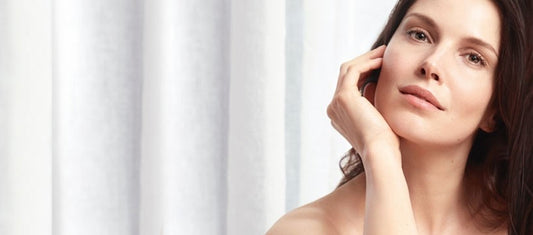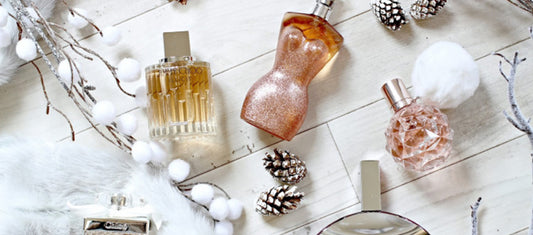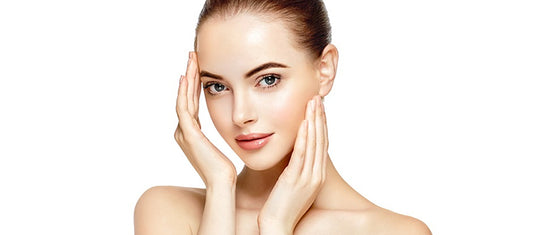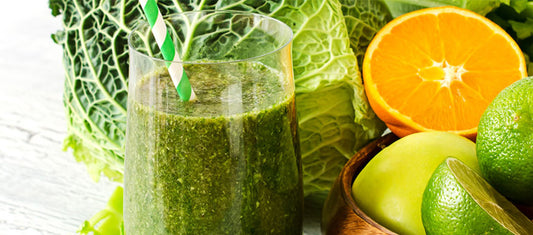
How to Pick a Toner for Oily Skin
Toning is an essential component of any complete skincare routine. It’s even more important if you have oily skin: toning ensures a thorough and deep cleanse, and lifts off any residue of make-up or dToning is an essential component of any complete skincare routine. It’s even more important if you have oily skin: toning ensures a thorough and deep cleanse, and lifts off any residue of make-up or dirt that might remain on your skin after cleansing.
Toning can also help balance your skin’s pH: when your skin pH is too low, it can cause excess sebum production and an oilier complexion.
To help manage oily skin, it’s important to find a toner that is lightweight, won’t clog your pores, and won’t leave a slick residue behind afterwards. In this article, we’ve covered all the basics on how to pick a toner for oily skin.
Let’s take a look.
What is oily skin?
Oily skin describes skin that produces more oil than a normal or dry skin type. Oily skin can be identified by the following factors:
1) Skin that feels oily or shiny when you wake up in the morning 2) Make-up that doesn’t last long before smudging or running 3) Skin that feels “greasy” or slick 4) Being more prone to breakouts and pimplesIf two or more of these describe your skin, you most likely have an oily skin type.
What do toners do?
In general, a toner has two jobs. Its first job is to remove any lingering impurities, make-up or dirt that might have been left on the skin following your usual cleanse. Secondly, a toner typically includes a supplementary skincare benefit, whether it be exfoliation, balancing, soothing or refreshing the skin.
Do I need to use a toner if I have oily skin?
In general, toners are one of the most frequently skipped steps in a skincare routine. The benefits of toning are often subject to debate by dermatologists and beauty editors, but on the whole, it’s a good idea to add a toner into your morning or nighttime routine.
However, when it comes to oily skin, toning should be as integral to your routine as cleansing is. Why? It’s simple - oily skin produces more sebum, and this sebum can easily clog your pores and cause breakouts if left on the skin. When you use a toner, you help fully clean the skin while minimising your chances of breaking out.
Secondly, oily skin is often simply a question of pH balance. When your skin pH balance is too low, your skin is more prone to sebum overproduction and shine. Using a pH-balanced toner is a great way to re-balance your skin and minimise oil.
What’s the best toner for oily skin?
When it comes to looking for a toner for oily skin, the following points should be taken into consideration:
1) The toner must be non-comedogenic. “Non-comedogenic” ingredients are ingredients that won’t clog the pores. For oily skin types - especially acne-prone oily skin types - you should avoid comedogenic ingredients throughout your entire skincare routine.
2) The toner should be pH balanced. As we explained above, oiliness can sometimes be a simple question of pH balance. Using a pH-balanced toner can help restore healthy pH levels to your skin.
3) It should be antibacterial. In order to prevent breakouts and help control oil production, you should choose a toner that contains at least one antibacterial or antimicrobial property. This will prevent sebum from clogging your pores and causing pimples.
4) Search for soothing ingredients to calm the skin and reduce inflammation. You don’t want to use harsh, abrasive ingredients on oily or acne-prone skin.
5) Use an exfoliating toner. The key to keeping oily skin under control is through regular exfoliation. An exfoliating toner is a great, non-abrasive way to renew your skin.
Best Toner for Oily Skin
So, what toner ticks all the boxes when it comes to oily skin?
Our current recommendation has to be our Pharmaceris toner for oily skin. This toner contains antibacterial properties to purify and cleanse the skin, while the malic acid in the formula helps to exfoliate the skin while smoothing out any uneven texture caused by lesions, acne scars or pimples.
Best used twice a day, this toner can help minimise the development of new pimples by reducing oil production. It can also improve the appearance of old scars and hyperpigmentation caused by former acne, as the toner is enriched with brightening lemon fruit extract best known for reducing dark spots and minimising scars.
Final Thoughts
Picking a toner for oily skin is pretty simple when you know what ingredients to look out for - and those to avoid! It’s also important to be consistent with your skincare routine - those with oily skin should be using a toner as part of their morning and nighttime skincare routine every day.
With daily applications and a product that works, toning your oily skin can help restore your skin’s pH balance, control oil production and help you avoid that midday shine.
FAQs
How do you apply toner?
To apply toner correctly, press a small amount of product into a cotton pad or reusable toning pad. Wipe the toner gently across the cheeks, t-zone, jawline, chin and neck. Some people prefer to use their fingertips to pat toner into the skin, but we wouldn’t recommend this for oily skin types.
What step is toning in a skincare routine?
You should tone your skin after removing make-up and cleansing. Once you’ve toned your skin, you should be applying any serums or oils, before following up with your usual moisturiser.
Can toner make you more oily?
The only way a toner can make your skin more oily is if you’re using the wrong type of toner. Provided that you’re using a toner suitable for oily skin (and not neglecting other parts of your skincare routine) toning should help balance your skin, not make it oilier.
What’s the difference between toning and cleansing?
While cleansing works by clearing existing make-up or dirt off the skin, toning the skin helps balance your skin’s pH while offering extra skincare benefits, such as exfoliating or balancing. Cleansers are also washed off the face, while toners are not. irt that might remain on your skin after cleansing.










